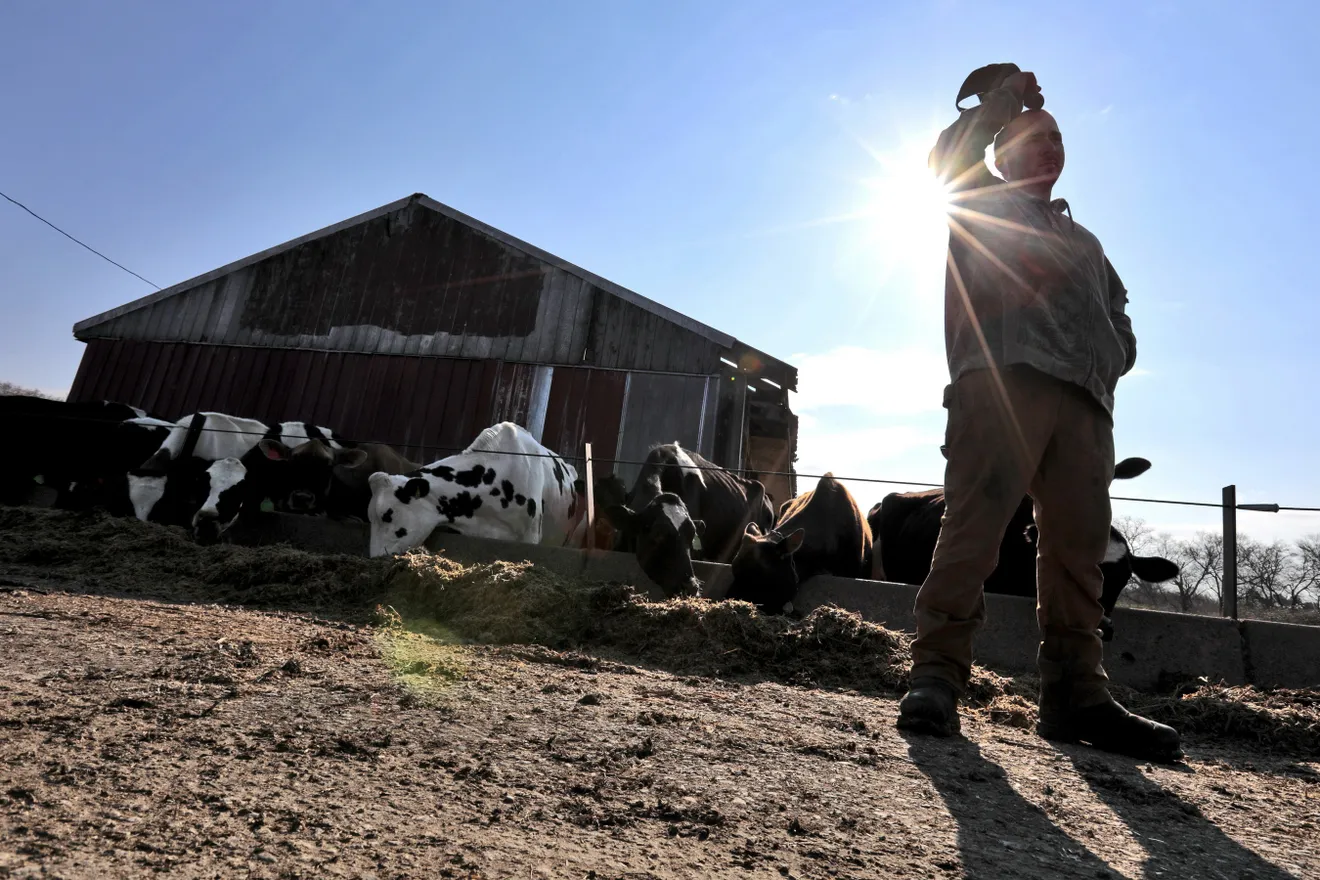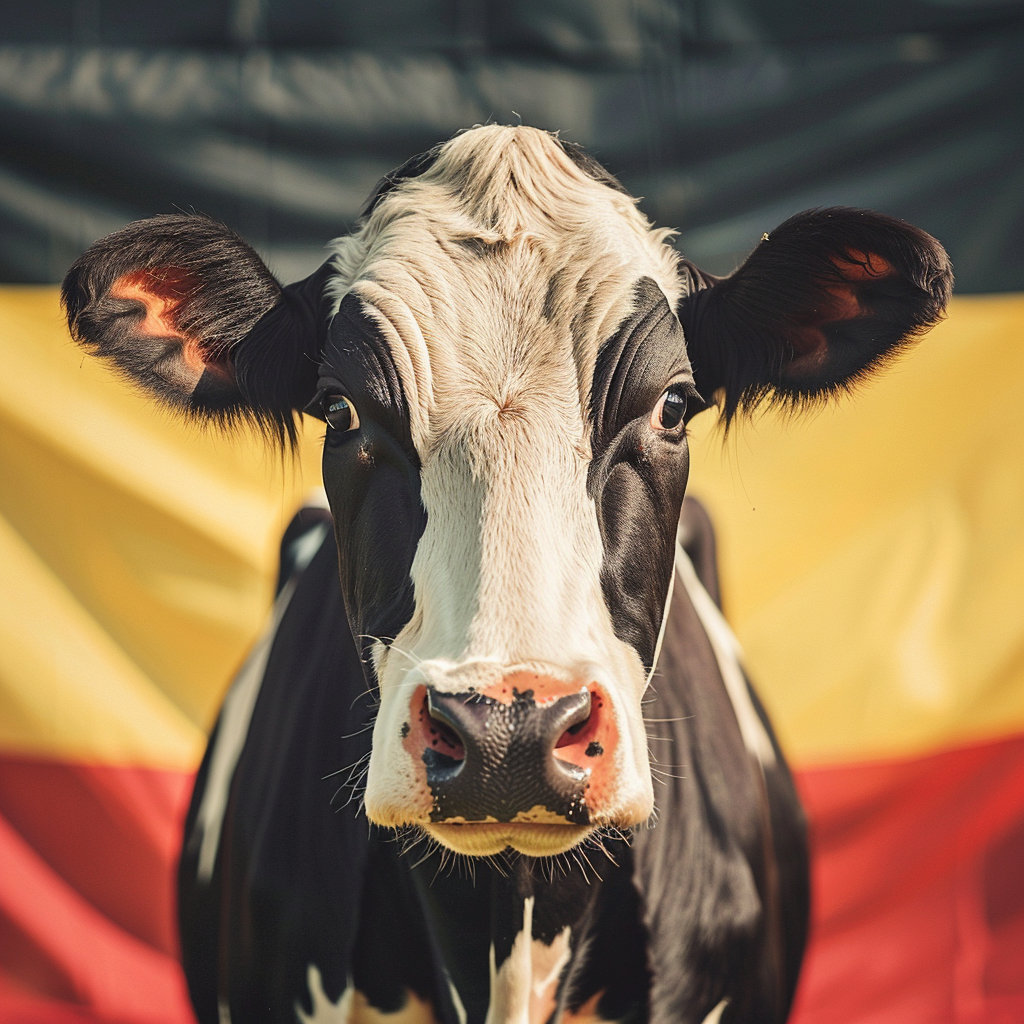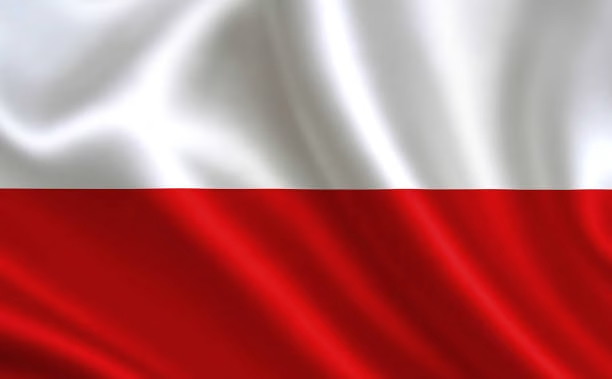U.S. dairy farms have shrunk by two-thirds while milk production rose—find out why this matters for farmers!
Summary: The decline of U.S. dairy farms over the past generation is staggeringly evident, with two-thirds disappearing, yet milk production has paradoxically surged by a third. This trend is driven by technological advancements and economic pressures, pushing family-operated farms to the brink. As small farms struggle against unsustainable milk prices and industry consolidation, the remaining farms leverage innovations such as automated milking systems and genetic breakthroughs to boost production. With regions like the Midwest and Northeast hardest hit—Wisconsin alone lost nearly half its dairy farms from 2003 to 2020—the story underscores an urgent need for new strategies to ensure a sustainable and thriving future for all stakeholders in the dairy industry.
Key Takeaways:
- Family dairy farms in the U.S. have drastically diminished, with two out of three vanishing within a generation.
- Despite the decline in the number of farms, milk production has increased by a third due to technological advancements.
- Innovation and efficiency improvements are helping remaining dairy farms thrive, even as smaller farms disappear.
- Small dairy farms face significant economic challenges, often driven by market pressures and consolidation within the industry.
- Many small farms struggle with succession planning and engaging the next generation to continue the farming tradition.
- Crisis in the dairy industry necessitates policy reforms, better access to credit and capital, and community support to ensure sustainability.
- Consumer awareness and advocacy play crucial roles in championing the cause of small dairy farms and ensuring their survival.
- The dairy industry’s future hinges on navigating economic pressures, leveraging new technologies, and supporting farming communities.

You may find it difficult to believe, yet two of every three dairy farms in the United States have closed during the last generation. You read it right: milk output has climbed by a remarkable one-third despite the tremendous migration. How can this be? In 1987, the U.S. had 202,068 dairy farms, but by 2017, the number had decreased to 54,000, according to the USDA. This contradictory pattern is more than a statistical aberration; it is a significant change with far-reaching repercussions for the dairy sector, rural economies, and food security. Understanding the forces driving this shift may help us navigate the future of agriculture. Furthermore, it gives insight into broader economic and technical developments in American agriculture, such as consolidation and automation.
| Year | Number of Dairy Farms | Trend in Number of Dairy Farms | Number of Dairy Cattle (in millions) | Trend in Number of Dairy Cattle |
|---|---|---|---|---|
| 2004 | 86,000 | Declining | 9.0 | Steady |
| 2008 | 69,890 | Declining | 9.2 | Increasing |
| 2012 | 51,481 | Declining | 9.3 | Increasing |
| 2016 | 40,219 | Declining | 9.4 | Increasing |
| 2020 | 34,187 | Declining | 9.4 | Steady |
| 2024 | Estimated 29,000 | Declining | 9.5 | Steady |
The Astonishing Decline of Family Dairy Farms: What’s Happening Behind the Scenes?
The previous several decades have been revolutionary for the United States dairy business, with a significant decline in dairy farms. Since the 1970s, small, family-owned farms have decreased by approximately two-thirds. This considerable drop may be attributed to many main variables. Economic constraints have played an important part; as production costs have grown, it has been more difficult for smaller farms to compete with larger enterprises. Technological improvements have also transformed the sector. Innovations in milking technology, feed efficiency, and animal health have enabled more giant farms to attain previously unmatched production. For example, an ordinary cow now produces almost four times as much milk as it did in the 1950s.
Furthermore, consumer choices have altered market dynamics. An increasing demand for organic and sustainably derived goods frequently necessitates alternative manufacturing techniques and scale. These changes have contributed to the consolidation of dairy farms, favoring larger enterprises that can better absorb these complexity and expenses.
Survive and Thrive: The Dairy Industry’s Hidden Secret to Milk Production Boom Amid Farm Disappearance
| State | Decline in Dairy Farm Numbers (2003-2023) |
|---|---|
| Wisconsin | 58% |
| Pennsylvania | 45% |
| New York | 40% |
| California | 35% |
| Minnesota | 32% |
The dairy business in the United States is exhibiting a paradoxical rise and collapse. According to the most recent USDA statistics, the number of dairy farms in the United States has plummeted, with two out of every three disappearing during the last generation. In sharp contrast, milk output has increased by one-third during the same time (USDA). Despite the decreasing number of farms, technological developments and better agricultural methods have allowed existing dairy farms to enhance output. A significant illustration of this efficiency is that the typical dairy cow now produces nearly four times more milk than its equivalent in the 1950s.
The decline has hardest hit the Midwest and Northeast regions in dairy farms. For example, Wisconsin, known as ‘America’s Dairyland,’ lost nearly half of its dairy farms from 2003 to 2020. New York experienced a similar 47% drop during the same period, while California, despite leading in milk production, saw its dairy farms reduced from around 2,100 in 2003 to about 1,300 in 2020. Texas and Pennsylvania also faced steep declines; Texas dairy farms plummeted from 1,200 to just 351 (a 71% drop), and Pennsylvania saw a 45% reduction in the number of dairy farms.
Technological Triumphs Propel Remaining U.S. Dairy Farms to New Heights Amid Decline
While the number of dairy farms in the United States has decreased, technological developments have increased the output of those at record levels. The automated milking system (AMS) is a remarkable breakthrough in transforming farmers’ herd management practices. This technology reduces human effort, enables more frequent milking, and carefully monitors each cow’s health and productivity, resulting in significant gains in milk supply.
In addition to AMS, new feed formulations have had a significant effect. Modern feed technology contains precise nutritional ratios suited to dairy cows’ demands. This accurate feeding leads to healthier cows and, as a result, increased milk output. A well-balanced diet improves digestive efficiency and milk quality, so every drop counts.
Furthermore, genetic breakthroughs in dairy cattle have proven game changers. Dairy cows nowadays are significantly more productive than their ancestors because of selective breeding and genetic innovation. Genetic developments have allowed for the breeding of cows that give more milk and are more resistant to common diseases, increasing their productivity and efficiency.
These technical breakthroughs guarantee that, even as the number of dairy farms falls, total output rises, securing the industry’s future while maintaining a high milk quality and sustainability level.
The Economic Storm Farming Families Didn’t See Coming: Why Small Dairy Farms Are Disappearing in Droves
| Year | Number of Small Dairy Farms | Percentage Decline |
|---|---|---|
| 2000 | 70,375 | N/A |
| 2005 | 60,000 | -15% |
| 2010 | 49,700 | -17% |
| 2015 | 40,000 | -19.5% |
| 2020 | 30,375 | -24% |
The economic forces driving dairy farm consolidation are diverse, including changing milk prices, growing production costs, and the uncertain dynamics of international commerce. Over the last several decades, milk’s average price per hundredweight (cwt) has fluctuated significantly, affecting dairy producers’ revenue predictability. This economic unpredictability adds to the financial burden on smaller farms, which sometimes need more capital reserves to weather extended periods of low pricing.
Production costs have also risen, driven by rising feed prices, labor expenses, and the need for sophisticated agricultural technologies. According to the United States Department of Agriculture (USDA), feed expenditures may account for up to 60% of a dairy farm’s overall production costs. This high expense makes it easier for smaller farms to stay sustainable while expanding their operations.
International commerce is also quite important. Global market developments and trade policy significantly impact the U.S. dairy business. Tariffs, trade agreements, and competitive pricing of dairy products from nations such as New Zealand and the European Union all influence local milk costs. The North American Free Trade Agreement (NAFTA) and its successor, the United States-Mexico-Canada Agreement (USMCA), have transformed the landscape by opening up new markets and bringing competition from imported items, sometimes with cheaper manufacturing costs.
These economic incentives encourage consolidation, with smaller farmers selling out or merging with more giant enterprises to gain economies of scale. Consolidation helps surviving farmers boost productivity and profitability in an increasingly competitive economy.
Pushed to the Breaking Point: Can Small Dairy Farms Survive the Industry’s Ruthless Evolution?
| Year | Average Herd Size |
|---|---|
| 2003 | 100 |
| 2008 | 120 |
| 2013 | 150 |
| 2018 | 200 |
| 2023 | 250 |
The reality for small dairy farmers is clear and frequently cruel. These family-run companies, such as the Wisconsin farm with 500 cows that sustain three generations, have battled to keep up with the dairy industry’s tectonic transformations. One crucial problem is the enormous amount of output necessary to stay sustainable. Advances in dairy farming technology have allowed more giant farms to boost production per cow tenfold, making it possible for smaller farms to compete by making matching expenditures, which are frequently prohibitively costly.
Furthermore, small farms are disproportionately affected by fluctuating milk prices and increased operating expenses. For example, some small farms that depend primarily on human labor may need help transferring to automated systems, which may be a substantial hurdle to obtaining the economies of scale required to remain viable. The emotional toll is also significant; for example, Emily, a fourth-generation farmer and U.S. Navy veteran, was forced to work as a heavy equipment operator owing to financial constraints on her family farm.
Despite these challenges, various assistance programs and efforts are in place to help small farmers maintain their competitiveness. The USDA gives grants and loans to small and medium-sized farms. The Beginning Farmer and Rancher Development Program (BFRDP) provides resources and instruction to young farmers, assisting them in developing skills necessary for contemporary agricultural techniques. Furthermore, municipal and state organizations routinely provide training and financial assistance to help small farm owners embrace new technology and enhance efficiency.
Furthermore, consumer awareness and direct-to-consumer sales have helped many small dairy farms survive. Small farms may gain higher price points for their goods by promoting them as artisanal or organic, reflecting the quality and attention they put into their operations. Community Supported Agriculture (CSA) programs and farmers’ markets enable small farms to engage directly with customers, encouraging loyalty and generating consistent cash sources.
Although small dairy farms confront significant obstacles, they are not without hope, thanks to a mix of assistance. With focused initiatives, inventive marketing methods, and a persistent dedication to quality, many are surviving and, in some instances, thriving in the ever-changing dairy sector environment.
The Dairy Industry at a Crossroads: Navigating Challenges and Seizing Opportunities for a Sustainable Future
Looking forward, the dairy sector in the United States is at a crossroads, with a combination of problems and possibilities that can significantly impact its future terrain. One possible trend is rising customer demand for organic and specialized dairy products. Organic milk, for example, has witnessed an increase in demand as more people become health-conscious and ecologically aware. This move creates a potential niche market for dairy producers prepared to modify their techniques to fulfill organic certification requirements.
Furthermore, sustainability is becoming a crucial concern, with consumers and activist organizations calling for more environmentally friendly agricultural techniques. Methane reduction methods, rotational grazing, and water conservation strategies are examples of innovative approaches in this field. These sustainable approaches appeal to consumer tastes while providing farmers with long-term advantages such as cost savings and increased agricultural resilience.
Technology’s importance should be considered. Advanced dairy management software, automated milking equipment, and precision agricultural technologies are poised to improve the industry’s efficiency and output significantly. These advances might help smaller farms compete more successfully by lowering labor costs and increasing milk output.
New business models and diversification techniques may arise as young people get increasingly involved in farming. Agritourism, direct-to-consumer sales, and collaborations with local food systems are ways the dairy business may adapt to suit current needs while remaining profitable.
Finally, legislative reforms and government assistance will be critical factors. Incentives for sustainable practices, subsidies for technology adoption, and training initiatives to educate the next generation of farmers are all essential steps that guarantee the U.S. dairy business will survive and flourish in the years ahead.
The Bottom Line
Despite the massive collapse of family dairy farms, the U.S. dairy business has grown milk output, exhibiting remarkable resilience and ingenuity. Fewer farms have adopted technology and scalability to improve efficiency, yet small farmers face constant economic pressures, resulting in tough decisions and financial misery. The developing capabilities of the dairy business in the United States emphasize the need for adaptation for survival. As the sector faces turbulence, stakeholders—farmers, consumers, and legislators—must remain aware, involved, and aggressive in addressing continuing problems and opportunities, advocating for fair policies, and recognizing agriculture’s vital role.













